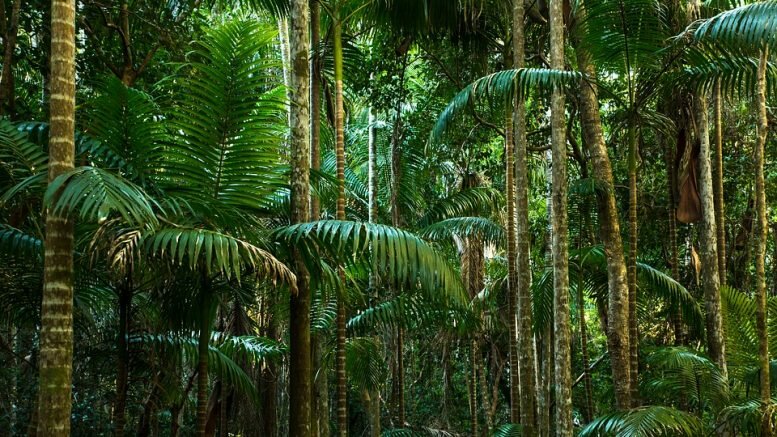Positive forest statistics from Brazil – but world rain forests under rising pressure
Recent figures from Brazil’s National Institute for Space Research (INPE) indicate that deforestation in the Brazilian Amazon decreased by 16 per cent in the past year compared with the year before. Nevertheless, forests in many parts of the world are under increasing pressure, according to new figures provided by Global Forest Watch, a forest information service.
– The numbers from Brazil are promising, and Brazil’s environment minister is to be commended for his stated willingness to continue strengthening the effort to counter deforestation. Despite these promising news, for the rainforests worldwide the trends are very worrying, says Norwegian Minister of Climate and Environment, Vidar Helgesen.
Deforestation in Brazil increased in the forest years 2015 and 2016 (forest years run from August to July). That increase is causing this year’s payments from Norway – which are based on the previous year’s deforestation figures – to fall sharply. This year’s payments for reduced deforestation will be less than half of the level provided to Brazil in recent years.
The publication of preliminary figures on deforestation in the Brazilian Amazon for the 2017 forest year has been awaited with great interest.
The preliminary figures indicate that 6 624 km2 of natural forest disappeared, which is 16 per cent less than in the previous forest year. If confirmed, these figures will provide a basis for increasing payment again next year. Deforestation in Brazil peaked in 2004, when more than 27 000 km2 of forest were lost, while the average lost in the decade before the reforms were implemented amounted to 19 500 km2.
Positive development
The Minister of Climate and Environment is pleased that the latest figures indicate developments more positive in nature. He noted that payment for results means that when deforestation goes down, payments go up, and vice versa. In any case, he expressed pleasure that the Brazilian authorities have made it clear they are not yet satisfied.
Brazil’s target for Amazon deforestation is to achieve, by 2020, an 80-per-cent reduction from the average recorded in the 1996–2005 period. To achieve this, annual deforestation must be reduced to 3 900 km2, representing a 40-per-cent reduction from the preliminary 2017 level. The job, in other words, is far from done.
– Forests could account for up to a third of the solution to the world’s climate problem through 2030, said Mr Helgesen. – It is therefore crucial for the global community to increase its effort.
Norway, Germany and the UK are the largest contributors to forested countries willing to address the deforestation problem. Norway must work hard to encourage others to contribute even more, says Minister Helgesen.
– We must support environmentalists and indigenous peoples, who are still systematically oppressed in many places. We must step up efforts to combat the illegal timber trade, whose scale matches that of the global cocaine industry. And we must help the world’s food industry to reach the goal of deforestation-free agriculture, the Minister of Climate and Environment says.
– The rainforest initiative is one of Norway’s most important undertakings, he continues.
– I am pleased there is agreement across party lines in our parliament to keep support for climate and forest issues at a high level through 2030, Minister Helgesen concludes.
A serious global situation
The grave threat to the world’s forests is highlighted by preliminary forest monitoring data from Global Forest Watch, the independent forest information system. The system is run by the World Resources Institute (WRI) in Washington, D.C., with Norway as one of its initiators and its largest donor. The figures, to be formally published on Monday 23 October, show an alarming loss of global forest cover in 2016.
Global Forest Watch measures all change in forest cover without distinguishing between natural forests, heavily degraded forests and plantations.
The figures are therefore not directly comparable with Brazil’s official figures, which only reflect gross deforestation of natural forests in the Amazon. With regard to the situation as a whole, however, the two sources corroborate one another.
Globally, according to Global Forest Watch, forest loss increased by more than 50 per cent from 2015. In the Brazilian Amazon, forest destruction more than doubled – a development reflected in the negative Brazilian deforestation figures for the 2016 forest year, which included reports of significantly increased deforestation. Indonesia and the Congo Basin also experienced substantial increases in forest loss, according to Global Forest Watch.
The El Niño weather phenomenon
– The new figures from the Brazilian space research institute and Global Forest Watch tell two important stories about the Brazilian Amazon, said Crystal Davies, head of WRI’s Global Forest Watch.
– It’s encouraging to see that Brazil’s figures indicate large-scale deforestation of natural forests has diminished in the period from August 2016 to July 2017, after two previous years of increasing deforestation.
She added: – At the same time, the Global Forest Watch figures indicate that forest fires, exacerbated by the El Niño weather phenomenon in 2015 and 2016, have contributed to large-scale forest deterioration not fully picked up by Brazil’s figures for 2015–2016. Both findings underscore the importance of continuing the fight against deforestation and intentional forest fires.
El Niño, which caused heat waves and drought in many parts of the tropics in late 2015 and early 2016, has worsened the plight of the world’s tropical forests. This worries Norway’s Minister of Climate and Environment.
– Deforestation and forest degradation are factors in climate change and probably in the greater frequency and power of phenomena like El Niño. If that results in more forest fires destroying more rainforests, the world could already be in a very worrisome and self-reinforcing pattern, Minister Helgesen says. – We have no time to lose, and there is broad consensus that our efforts must be enhanced even further.
© regjeringen.no / Norway Today





